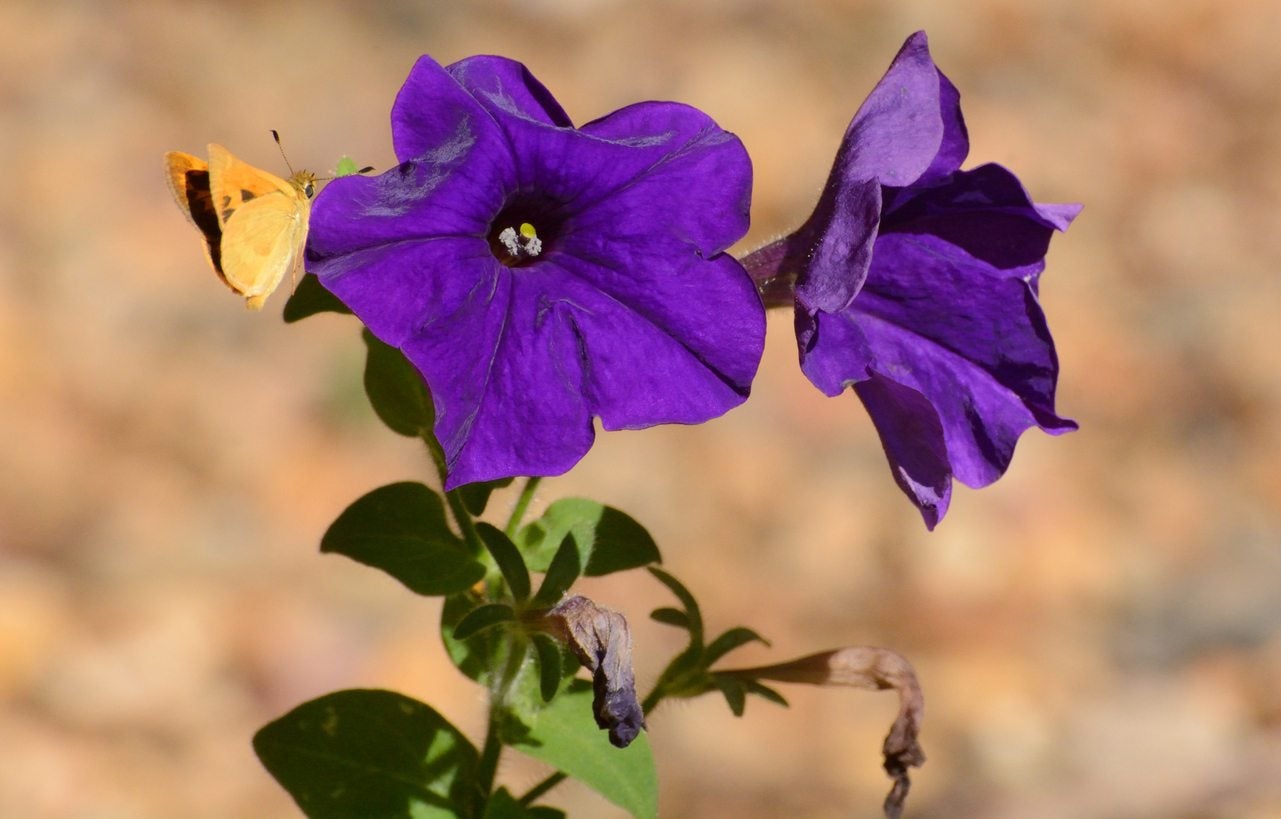My Petunias Are Wilting – What Causes Petunias To Wilt And Die


Petunias are extremely popular flowering plants that grow well in containers and as bedding plants in the garden. Available in very diverse varieties and colors, petunias can be found to meet just about any specifications you have. Whatever you want, you should have vibrant, beautiful blossoms all summer. However, this may not always be the case. What happens when your petunias start to wilt? Sometimes it’s easily fixed, but sometimes it’s a sign of something serious. Keep reading to learn more about petunia wilting problems and what causes petunias to wilt and die.
Troubleshooting Petunia Wilting Problems
Wilting petunia flowers can mean many things. Maybe the most common (and easily fixable) is improper watering. Like lots of plants, petunias respond to a lack of water by wilting. Don’t just water them more though! Wilting petunia flowers can also be a sign of too much water. Always check the soil around your petunias before watering–if the soil is still damp, don’t water it. Lack of sun can also lead to the wilting of petunias. Petunias prefer full sun and will produce the most flowers if they get it. They can survive in partial sun as long as they get five to six hours of direct light every day. If your petunias are in the shade, that might be your problem. Petunia wilting problems can also be a sign of insect or fungal issues:
- Aphids, budworms, and slugs like to eat petunias, opening up sores in the leaves that allow disease in. Lead slugs away from your garden with bait. Spray for aphids and budworms if you see them.
- Certain diseases like white mold, gray mold, black root rot, and verticillium wilt can all lead to wilting leaves. Avoid disease by watering your petunias early in the morning so water doesn’t sit on the leaves and planting your petunias far enough apart to allow for good air circulation. If your petunias contract a fungal disease, remove the affected parts of the plant and apply a fungicide.
Gardening tips, videos, info and more delivered right to your inbox!
Sign up for the Gardening Know How newsletter today and receive a free copy of our e-book "How to Grow Delicious Tomatoes".

The only child of a horticulturist and an English teacher, Liz Baessler was destined to become a gardening editor. She has been with Gardening Know how since 2015, and a Senior Editor since 2020. She holds a BA in English from Brandeis University and an MA in English from the University of Geneva, Switzerland. After years of gardening in containers and community garden plots, she finally has a backyard of her own, which she is systematically filling with vegetables and flowers.
-
 Moody Blooms For Spring: 8 Types Of Black Flowers To Add Drama To Spring Displays
Moody Blooms For Spring: 8 Types Of Black Flowers To Add Drama To Spring DisplaysFrom midnight burgundies to inky violets, several types of black flowers can enrich and embolden a spring display. Try these brooding bloomers for a moody garden
By Tonya Barnett
-
 Can Snake Plants Live Outside? Everything You Need To Know For Snake Plants Al Fresco
Can Snake Plants Live Outside? Everything You Need To Know For Snake Plants Al FrescoSnake plants can live outside given the right conditions, but be careful that they don't take over! Learn the best way to use snake plants in your landscape.
By Mary Ellen Ellis